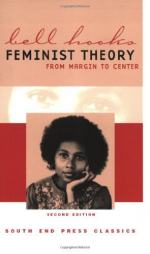
|
| Name: _________________________ | Period: ___________________ |
This quiz consists of 5 multiple choice and 5 short answer questions through Chapters 2 and 3.
Multiple Choice Questions
1. The author cites Lillian Hellman's autobiography as an example of what kind of phenomenon?
(a) White women being afraid to tell their domestic servants what to do.
(b) An rare example of working class writing.
(c) White women projecting mythical power and strength on black women while presenting themselves as powerless.
(d) An early white feminist who listened to women of color.
2. What would this change in language suggest?
(a) It would suggest belief and participation in social action for change, rather than a confrontational approach.
(b) It would be active rather than passive.
(c) It would affirm personal identity.
(d) It would make the idea of belonging to a movement more visible.
3. In Chapter 1, the author states that feminist theory and the feminist movement were originally shaped by which type of people?
(a) Working-class women.
(b) Expatriates living abroad.
(c) Middle-class women.
(d) Middle-class white women.
4. What name did early feminists use to describe radical, or revolutionary, feminists?
(a) Traitors.
(b) Naive.
(c) Sisters.
(d) Spoilers.
5. What is the social and racial dynamic described by the author at the beginning of the Preface to the first edition of the book?
(a) Upward mobility: Blacks strove to imitate whites and climb the social ladder.
(b) Desegregation: Blacks were finally able to go wherever they wanted.
(c) The author does not discuss race until the end of the Preface.
(d) Segregation: Black people could enter parts of the white people's world, but they could not stay there.
Short Answer Questions
1. Which definition of feminism does not work, according to the author?
2. According to the author, how are joint analyses of race, class, and gender seen today?
3. In the Preface to the second edition (2000), how does the author characterize the later reception of her work?
4. At the end of the Preface (2000), what does the author say regarding "patriarchal mass media" and feminism?
5. The phrase "suffering cannot be measured and compared quantitatively" comes from which of the following authors?
|
This section contains 463 words (approx. 2 pages at 300 words per page) |

|




